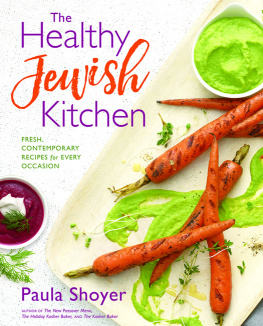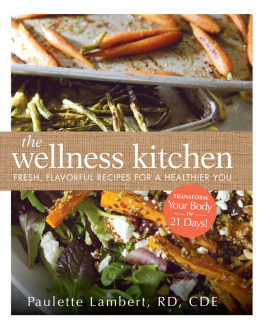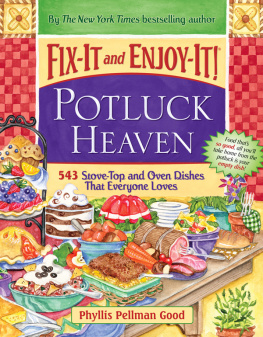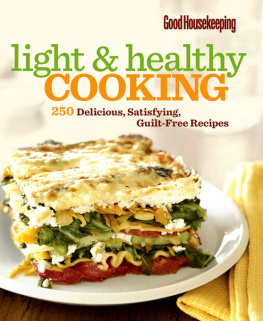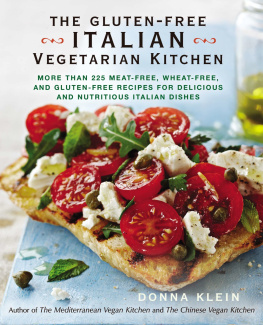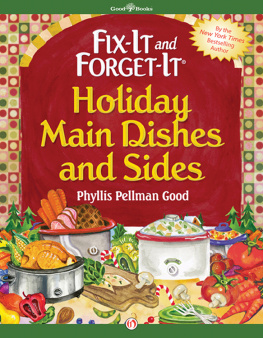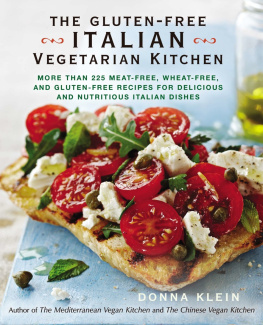STERLING EPICURE and the distinctive Sterling Epicure logo are registered trademarks of Sterling Publishing Co., Inc.
Text 2017 Paula Shoyer
Cover and interior photography 2017 Sterling Publishing Co., Inc., except where noted below.
All rights reserved. No part of this publication may be reproduced, stored in a retrieval system, or transmitted in any form or by any means (including electronic, mechanical, photocopying, recording, or otherwise) without prior written permission from the publisher.
ISBN 978-1-4549-2291-9
Library of Congress Cataloging-in-Publication Data
Names: Shoyer, Paula, author.
Title: The healthy Jewish kitchen : fresh, contemporary recipes for every occasion / Paula Shoyer, author of The New Passover Menu and The Holiday Kosher Baker.
Description: New York : Sterling Epicure, [2017] | Includes bibliographical references and index.
Identifiers: LCCN 2017007609 | ISBN 9781454922902 (book / hc-plc with jacket : alk. paper)
Subjects: LCSH: Jewish cooking. | LCGFT: Cookbooks.
Classification: LCC TX724 .S5328 2017 | DDC 641.5/676--dc23 LC record available at https://lccn.loc.gov/2017007609
For information about custom editions, special sales, and premium and corporate purchases, please contact Sterling Special Sales at 800-805-5489 or .
sterlingpublishing.com
Design by Shannon Nicole Plunkett
Principal photography by Bill Milne. Stock photography by iStockphoto.com: 5second
Contents
This book is dedicated to my parents, who nourished me:
Toby Marcus, zl, 19362015
Reubin Marcus, zl, 19262017
May their memories be a blessing.
This is a cookbook about wellness. Writing The Healthy Jewish Kitchen was a gift to me from my publisher, and now these recipes are my gift to you.
Sterling Epicure came to me in December 2015 and asked if I would write a healthy kosher food cookbook. It was only one month after my mother, Toby Marcus, zichrona, lvracha (may her memory be a blessing), passed away from cancer. She was diagnosed in August and was gone twelve weeks later. In December, looking ahead to 2016, I knew that I needed something to do, but I wasnt sure what. It is hard to make decisions when you are mourning and tired all the time. All I knew for sure was that standing still was not an option. I needed a new challenge. So I chose the one handed to me. After three cookbooks, writing cookbooks is something I know how to do, and that I enjoy, so I said yes.
The healthy angle was particularly fortuitous. Shiva in the New York area left me bloated. Grieving for months meant bad weeks and worse ones. Bad weeks meant more naps and eating a lot of popcorn. Really bad weeks meant getting into my twins stash of Ben and Jerrys ice cream. So when this project came along, I knew that it was time for me to eat better. We all need to.
Writing this book brought me back to life. As the months went by and I created more and more recipes that I was really excited about, I found that I felt lighter both physically and emotionally. I actually lost weight writing this book and knew I was onto something.
Most Jewish cookbooks still have too many recipes with processed ingredients, not enough whole grains, too much salt and fat, and too much sugar, even in savory dishes. My goal was to create recipes that use only natural ingredients. I banished margarine, frozen puff pastry, soup stocks and powders, and most jarred sauces (though I gave Dijon mustard a pardon). I gave up frying and created baked goods with as much whole grain flour as I could. I made recipes gluten-free where possible. I reduced sugar and salt.
These recipes include Jewish classics made healthier and updated for the modern table, and both American and international recipes that reflect food trends beyond the Jewish culinary world. This book has food you recognize, because you still want to feel connected to your ancestors kitchens, but I made the dishes more nutritious and, often, easier to prepare.
This book is a way for you to start eating better. I am not standing here preachingI go to Paris and Israel and eat my way through their best restaurants and bakeries. Good nutrition is about balance and finding a way to introduce into your diet more and more healthful food as often as possible.
I learned firsthand that life is unpredictable: Right before this book went to press, I lost my father, as well. There is no guarantee that eating better will help you live longer. All I know is that now I want to feel good and have energy for the people I love. I am simply offering you a subtle shift toward better health without giving up your favorite foods. The key to better health is homemade and natural food. This is your guidebook.
Paula
I am not a nutritionist, although I did consult with a few of them while writing this book. I listened to their suggestions and learned from them, but I was reluctant to send my audience to multiple markets to find ingredients they might never have heard of. I want people to actually make these recipes, not make their lives difficult.
Below was my thinking in using certain ingredients for this book:
SWEETENERS
I was determined not to use anything unnatural or that tasted unnatural, so I avoided all sugar substitutes. Instead, my goal was to use less than 1 cup of sugar per recipe and use honey where possible. Most of the dessert recipes have less than cup sugar, but a few, try as I might, wouldnt work any other way because of the other healthier ingredients in them.
SALT
High salt intake can increase blood pressure and put you at risk for heart attack and stroke. However, salt is an essential nutrient. Kosher food, especially in restaurants, in notoriously oversalted.
If there was one consistent complaint from my team of recipe testers, it was that the recipes all needed more salt. I was definitely conservative in adding salt. I teach teens never to add salt to a finished dish before they taste it; you should do the same. The recipes have a minimum amount of salt, and you can always add more. I found that adding just a pinch of kosher salt to dishes just before serving pumped up flavor, while using less salt overall.
Do your best to add only the amount of salt that is absolutely necessary.
OIL
There are so many different kinds of oil, and once you start using any of the oils listed below, you will be eating better than if you were still using vegetable oil, corn oil, or margarine. Each of the oils has benefits, and the best move for your overall health is to use a variety in your cooking. For this book I did not use any margarine, even the brands that are supposed to be better for your health. There are better fat choices to use that taste better.

